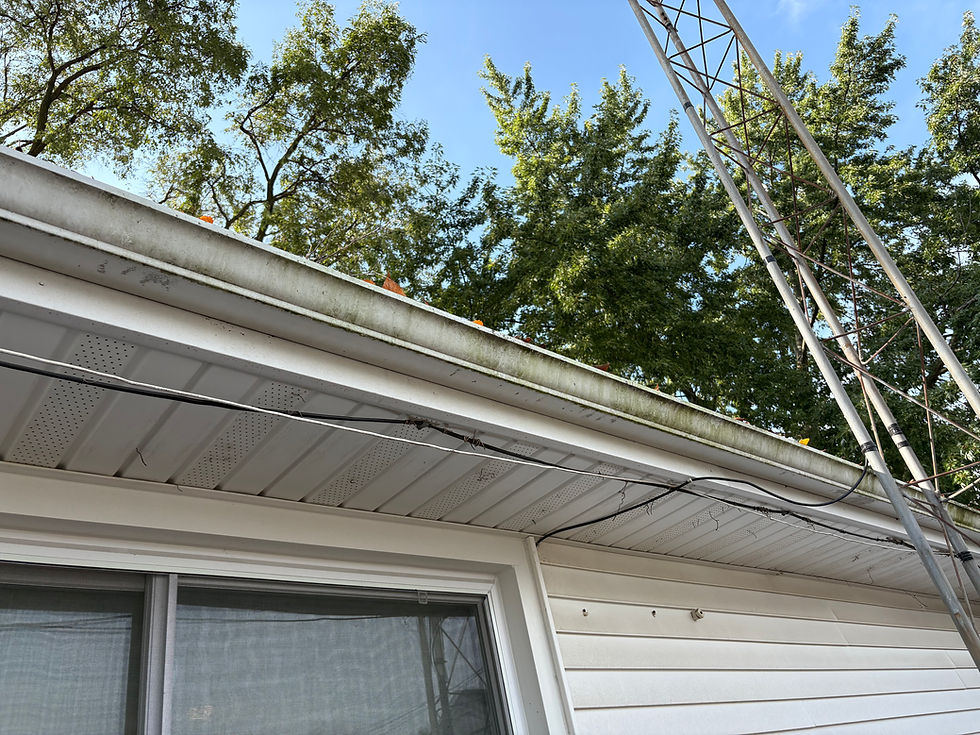The Ultimate Guide to Pressure Washing vs Soft Washing Using Sodium Hypochlorite for Effective Cleaning
- garbageguruswis
- Sep 25
- 3 min read
When it comes to keeping your home’s exterior looking its best, many people instinctively think of pressure washing. However, there's an alternative method that deserves your attention: soft washing. This technique, which uses sodium hypochlorite, is not only gentler on your home but also more effective for long-lasting results. In this guide, we will compare pressure washing and soft washing, highlight the benefits of sodium hypochlorite, and explain why hiring professionals is often the smartest choice for your cleaning needs.
Understanding Pressure Washing
Pressure washing uses high-pressure water to clean outdoor surfaces. The practice is usually applied to driveways, patios, and home exteriors. While it’s good for removing dirt, it often falls short in addressing deeper issues like mold and mildew. For example, research shows that pressure washing may not completely eliminate mold, which can regrow quickly if left unchecked. Furthermore, the intense pressure can damage softer materials, strip paint, and sometimes push water into places that lead to water damage. High pressure washing with a good post/pre treatment with sodium hypochlorite is the way to go when it comes to cleaning concrete or brick. Not all stone is the same so do your research to ensure your stone is safe for the application of sodium hypochlorite.
The Power of Sodium Hypochlorite
Sodium hypochlorite is a potent cleaning solution that excels in soft washing. This agent breaks down organic materials like mold and algae, making them easy to rinse away. When combined with a high gallon per minute (GPM) rinse, sodium hypochlorite can leave your property looking like new. For instance, a study indicated that homes treated with this method saw up to a 90% reduction in surface mold within a week. This approach is not only safer for your surfaces but also proves to be more effective.
The Misconception of Pressure Washing
Many homeowners mistakenly think that pressure washing is the best option for cleaning their homes. However, it often fails to eliminate underlying issues, such as persistent mold or algae. In contrast, soft washing penetrates these problems, ensuring they are fully addressed. For example, homes regularly soft washed experience longer-lasting cleanliness; some homeowners report needing a follow-up treatment only once a year compared to quarterly for pressure washed homes.
The Dangers of Sodium Hypochlorite Misuse
While sodium hypochlorite can be highly effective, improper use can lead to unintended consequences. For instance, if the solution touches plants, it can cause leaf burn or even kill them. Statistics reveal that misapplication can damage up to 30% of surrounding vegetation if precautions are not taken. Moreover, using sodium hypochlorite without proper dilution can harm your home's paint and siding, leading to costly repairs.
Why Hiring Professionals is the Best Choice
Given the risks associated with both pressure washing and sodium hypochlorite, hiring professionals is often the safest and most effective route. Trained cleaners are equipped with the knowledge to safely use sodium hypochlorite and the right tools for soft washing. They understand how to adjust the pressure properly and how to properly dilute cleaning agents, ensuring your home is cleaned thoroughly without damage. Many professional services report a satisfaction rate of over 95%, underscoring the value of expert handling.
DIY Cleaning: A Quick Guide
If you’re interested in handling the cleaning yourself, follow these steps to ensure a safe process:
Gather Your Supplies: You will need a downstream injector or an x-jet, sodium hypochlorite, surfactant, water, and a high GPM rinse nozzle.
Dilute the Sodium Hypochlorite: Mix sodium hypochlorite with water according to the manufacturer's instructions. Use a down stream injector or a tool like an x-jet when trying to key in your mix. For houses you should aim for a 1-2 percent mix. For concrete a 3-4 percent mix. Every situation is different.
Apply the Solution: Use a low-pressure spray tip or x-jet to apply the solution to the surfaces you want to clean.
Let it Sit: Allow the solution to rest for 5-10 minutes to break down the organic materials effectively.
Rinse Thoroughly: Use a high GPM rinse nozzle to wash away the solution, ensuring all residues are completely removed.
Wrapping Things Up
While pressure washing is often viewed as the go-to cleaning method, soft washing with sodium hypochlorite stands out for its safety and effectiveness. By understanding the differences between these cleaning techniques, recognizing the power of sodium hypochlorite, and considering professional help when necessary, you can maintain your home’s exterior efficiently. Whether you hire an expert or take on the cleaning yourself, prioritizing safety and effectiveness will lead to the best results for your home.






Comments